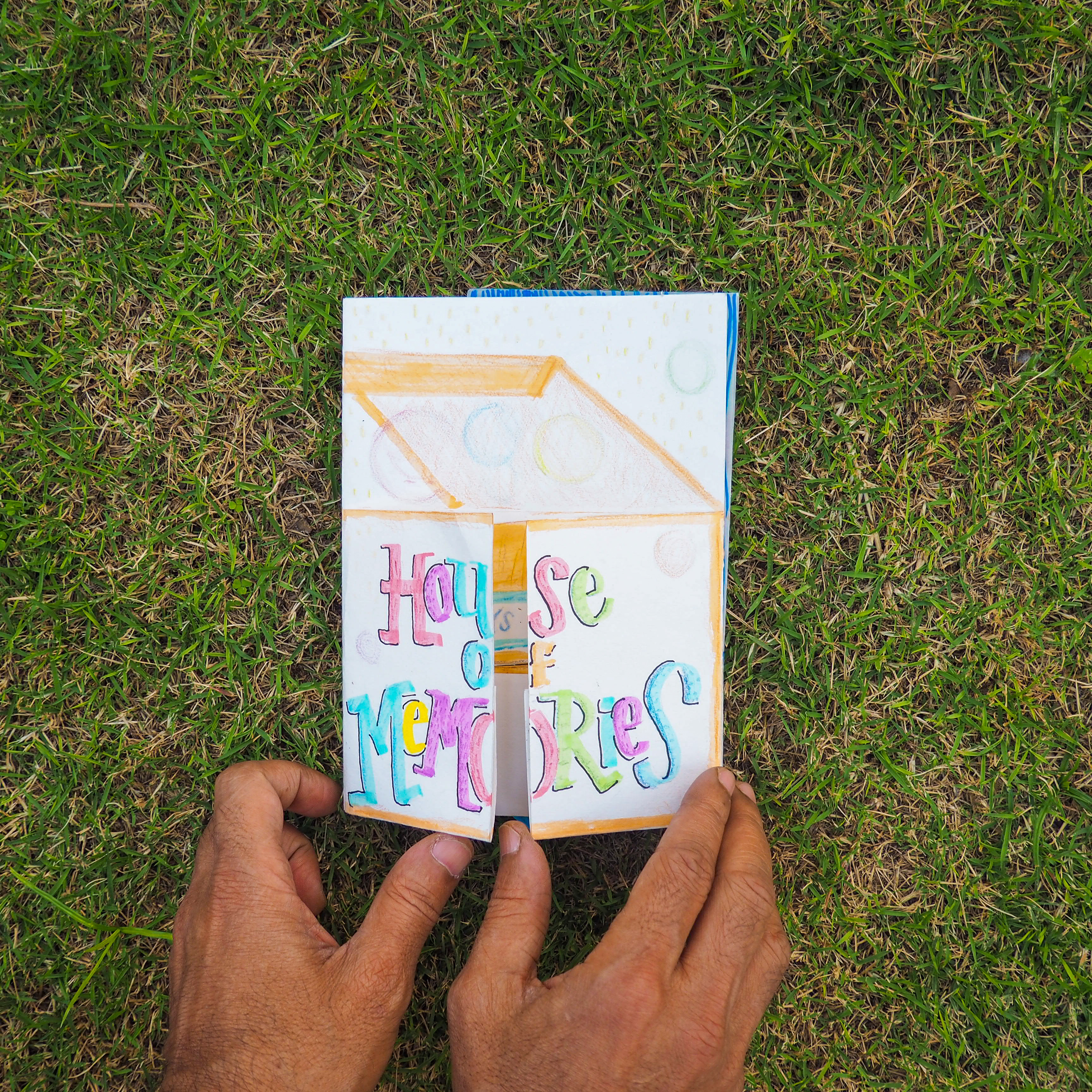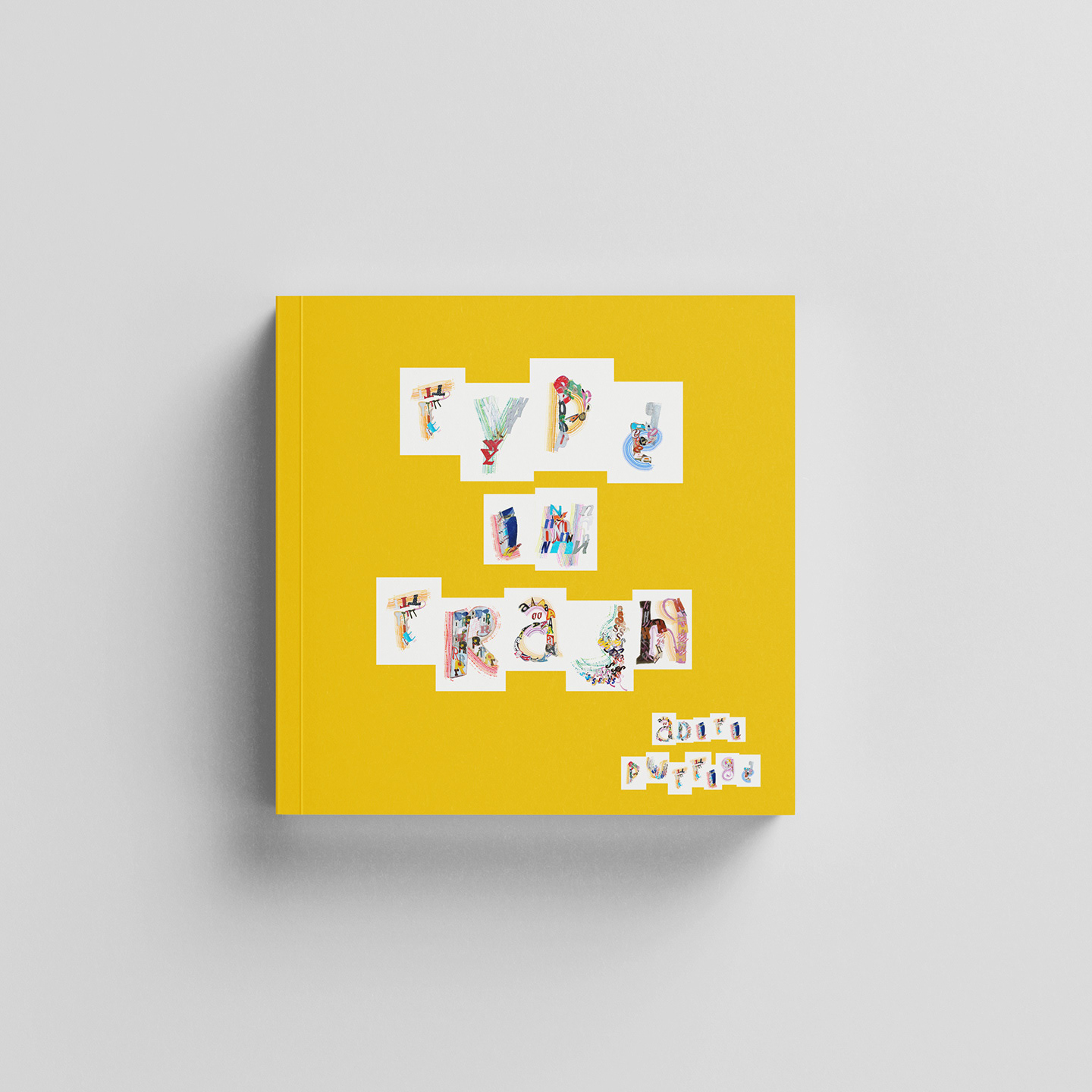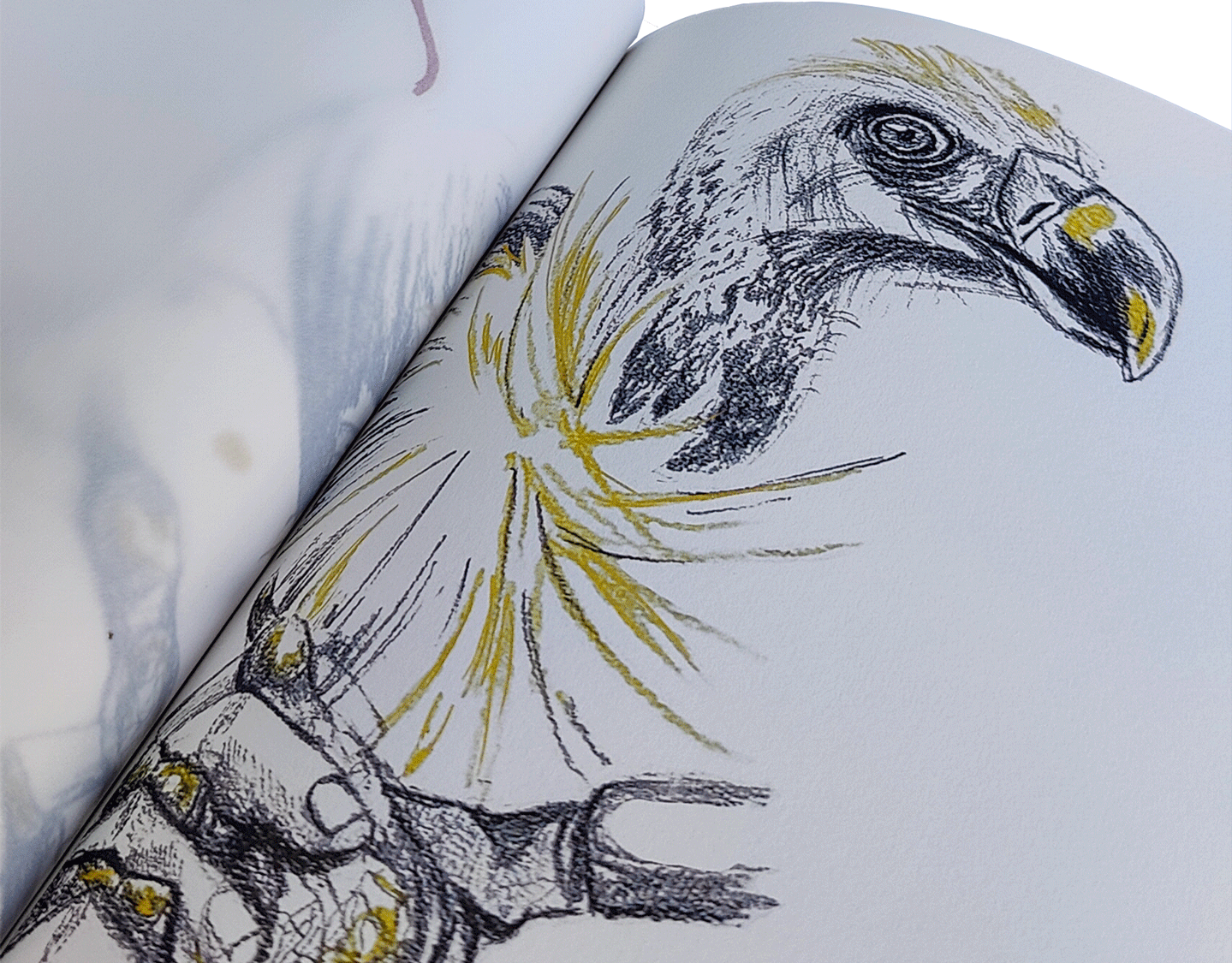Plants and trees have always been around us and are our very source of life. Yet, there exists a tendency to see them in the background rather than the foreground. This is referred to as Plant Awareness Disparity. While it may be true for many, it's not the case for everyone!
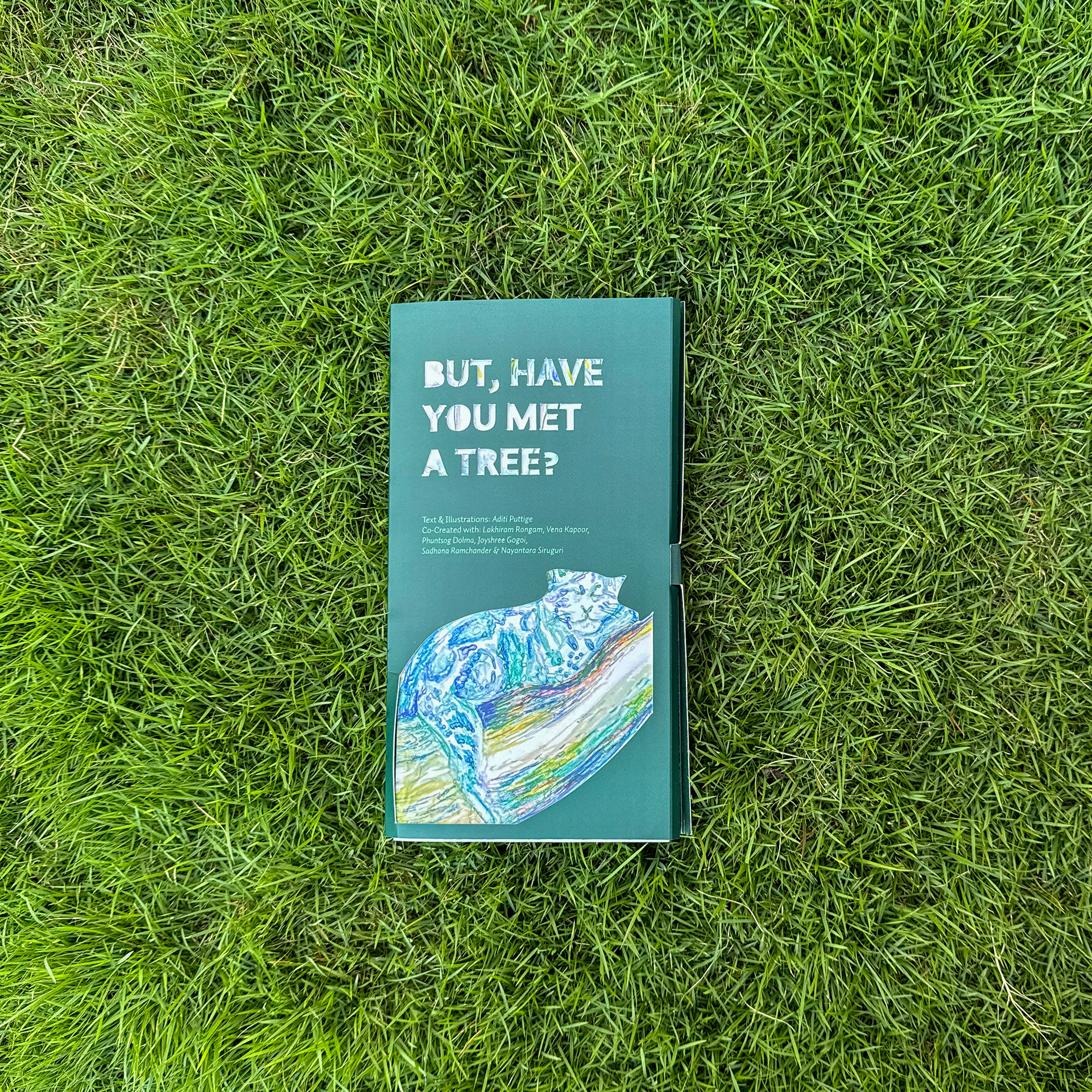
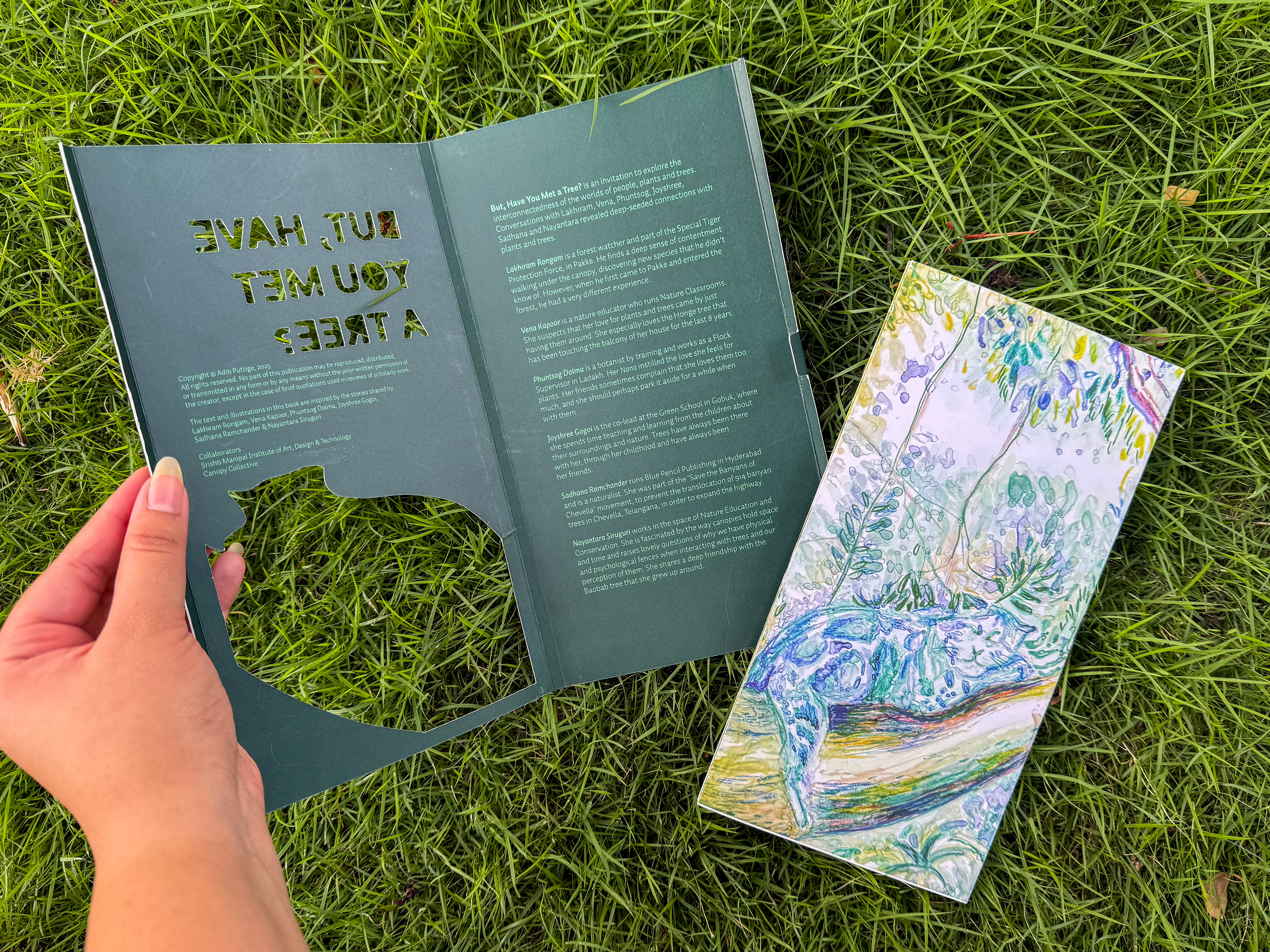
Lakhiram Rongam, Joyshree Gogoi, Phuntsog Dolma, Vena Kapoor, Nayantara Siruguri, and Sadhana Ramchander come from different landscapes across India, yet share friendships with trees and plants.
They see them as beings, beyond beauty and utility. The trees and plants are companions, soulmates, and peacebringers. They exist in the foreground of their landscapes. How do these friendships, rooted in joy, vulnerability, and peace, begin? Is there hope to be found in the face of deforestation—not only in forests but also in urban spaces where trees are cut or translocated?
How do they cope with, and sometimes even resist, the silence that follows the disappearance of trees? This narrative is a series of instances that emerged from conversations with these individuals, exploring the intertwined feelings of joy, hope, and despair experienced in the company of trees and plants.
They see them as beings, beyond beauty and utility. The trees and plants are companions, soulmates, and peacebringers. They exist in the foreground of their landscapes. How do these friendships, rooted in joy, vulnerability, and peace, begin? Is there hope to be found in the face of deforestation—not only in forests but also in urban spaces where trees are cut or translocated?
How do they cope with, and sometimes even resist, the silence that follows the disappearance of trees? This narrative is a series of instances that emerged from conversations with these individuals, exploring the intertwined feelings of joy, hope, and despair experienced in the company of trees and plants.
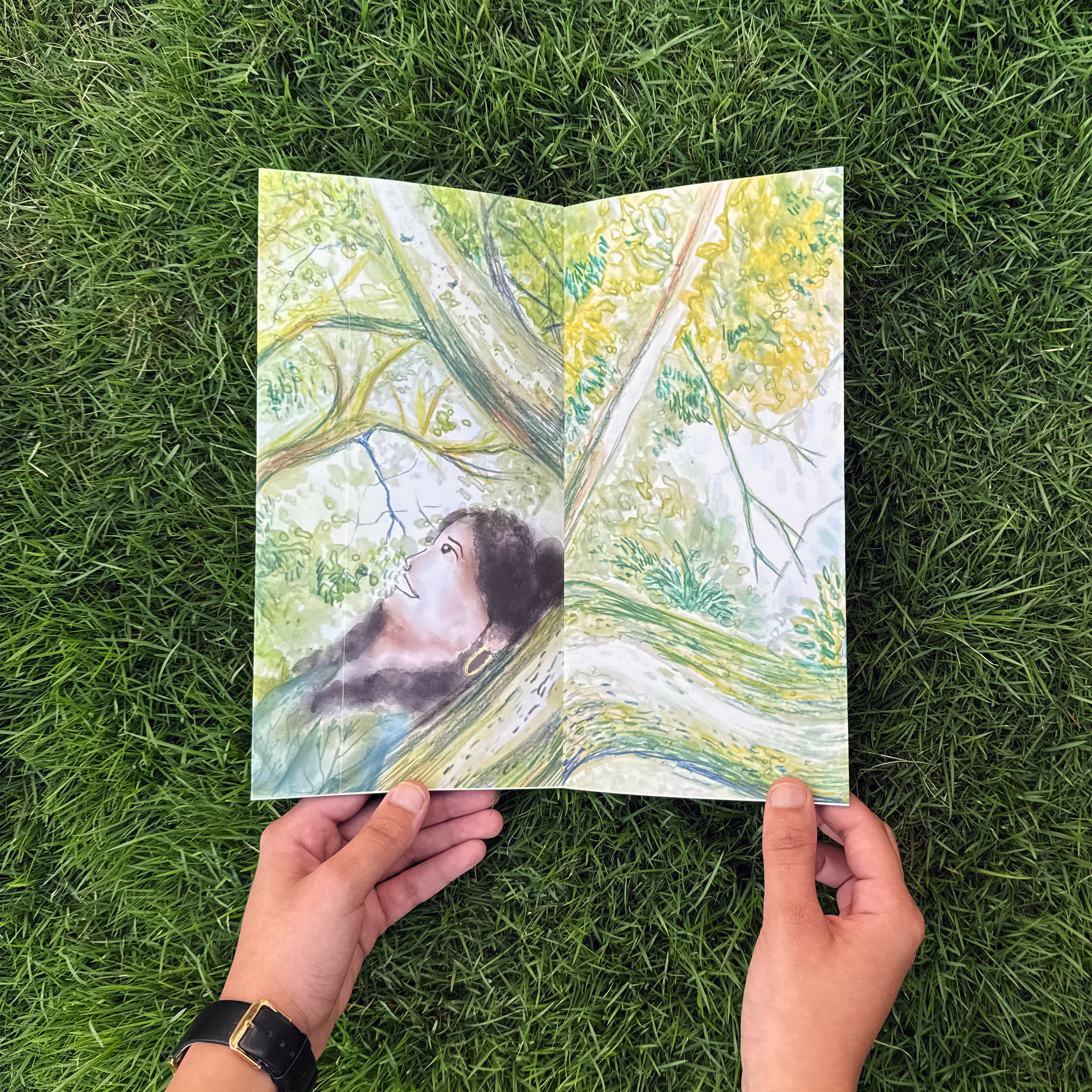
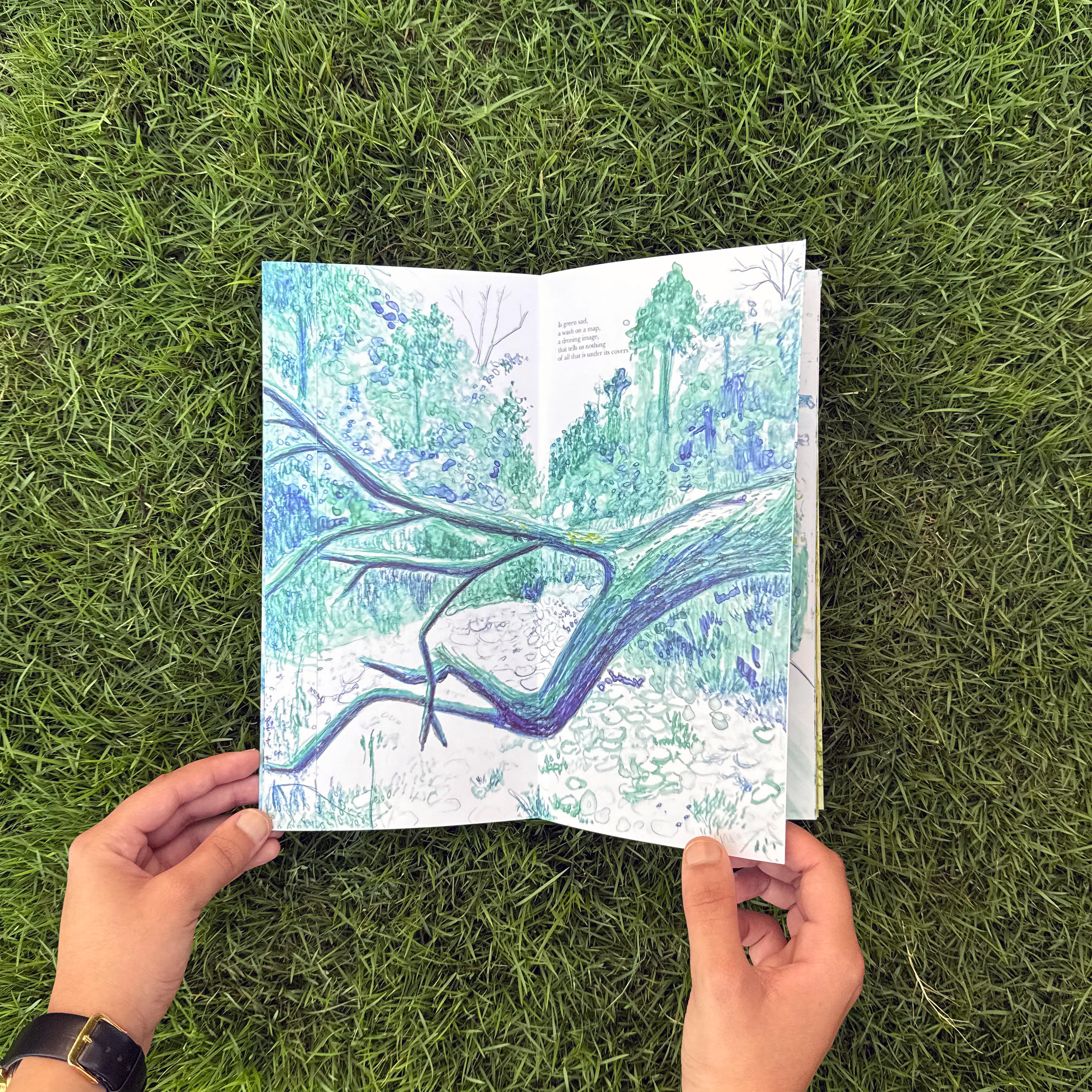
Through the conversations with Vena, Nayantara, Lakhiram, Joyshree, Sadhana and Phuntsog, the structure of the narrative emerged and took the form of an accordion book. It is divided into three sections. The first dwells on our perception of wildlife and it's conservation, and do we consider plants and green as wildlife? What do different shades of green mean in different places, is green in the city different from green in the forest? The second section dwells on the feelings of connections and friendship with individual trees and plants, and green spaces. The third section takes place when the last page on one side of the accordion is turned. It shares instances of the feelings of loss that comes with these deep and meaningful relationships, with plants and trees. What does loss and despair make individuals do?
It begins with the question of, 'Have you met a tree?', and ends with, 'Have you ever been beheld by a tree?' Through each section of the question, the shades of green change, starting with a cooler blue-green, to a warmer green with warm yellows, and finally a green brown to talk about the loss.
This narrative was created as part of my thesis project, Stories that Grow, in collaboration with Canopy Collective and Svabhu Kohli.
It begins with the question of, 'Have you met a tree?', and ends with, 'Have you ever been beheld by a tree?' Through each section of the question, the shades of green change, starting with a cooler blue-green, to a warmer green with warm yellows, and finally a green brown to talk about the loss.
This narrative was created as part of my thesis project, Stories that Grow, in collaboration with Canopy Collective and Svabhu Kohli.
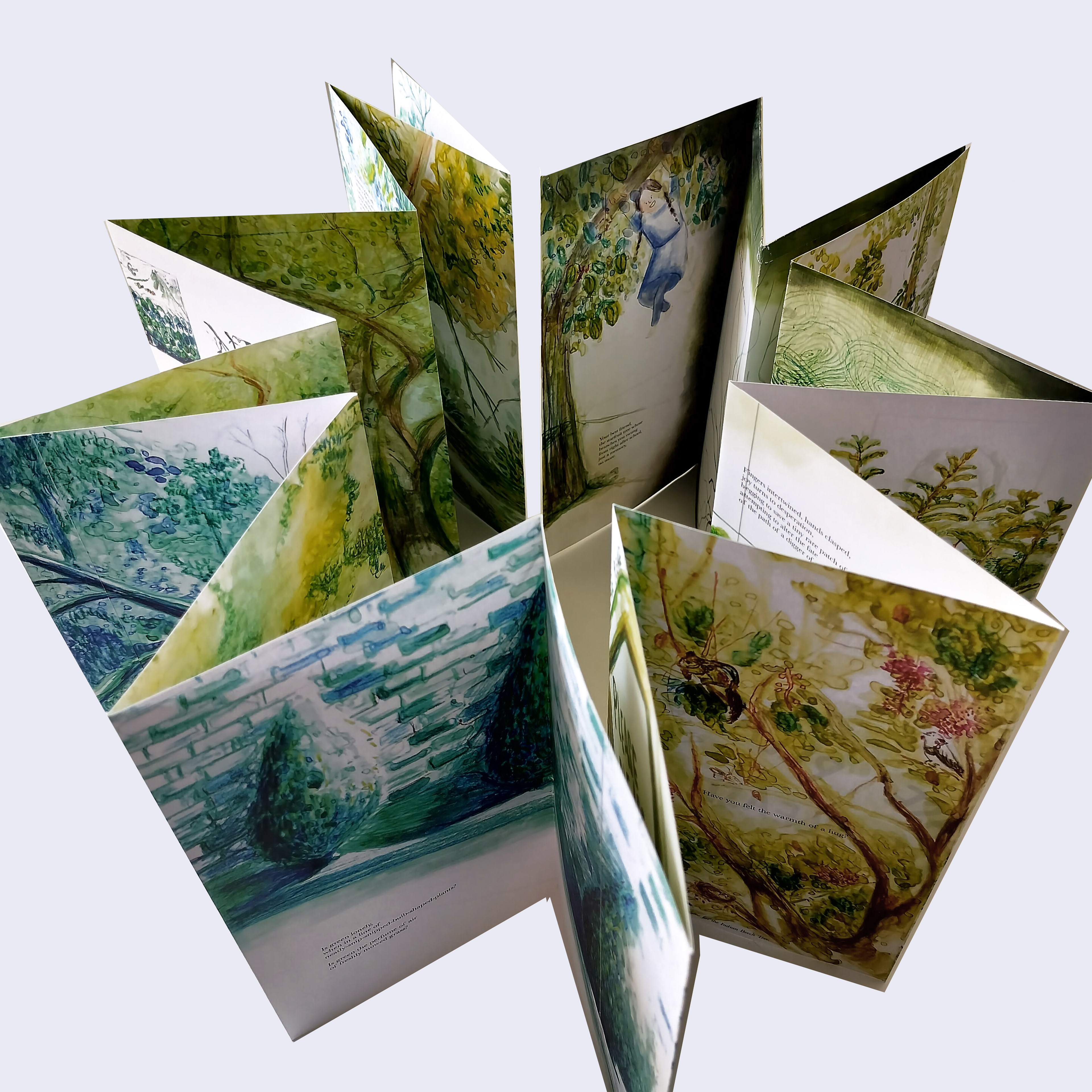
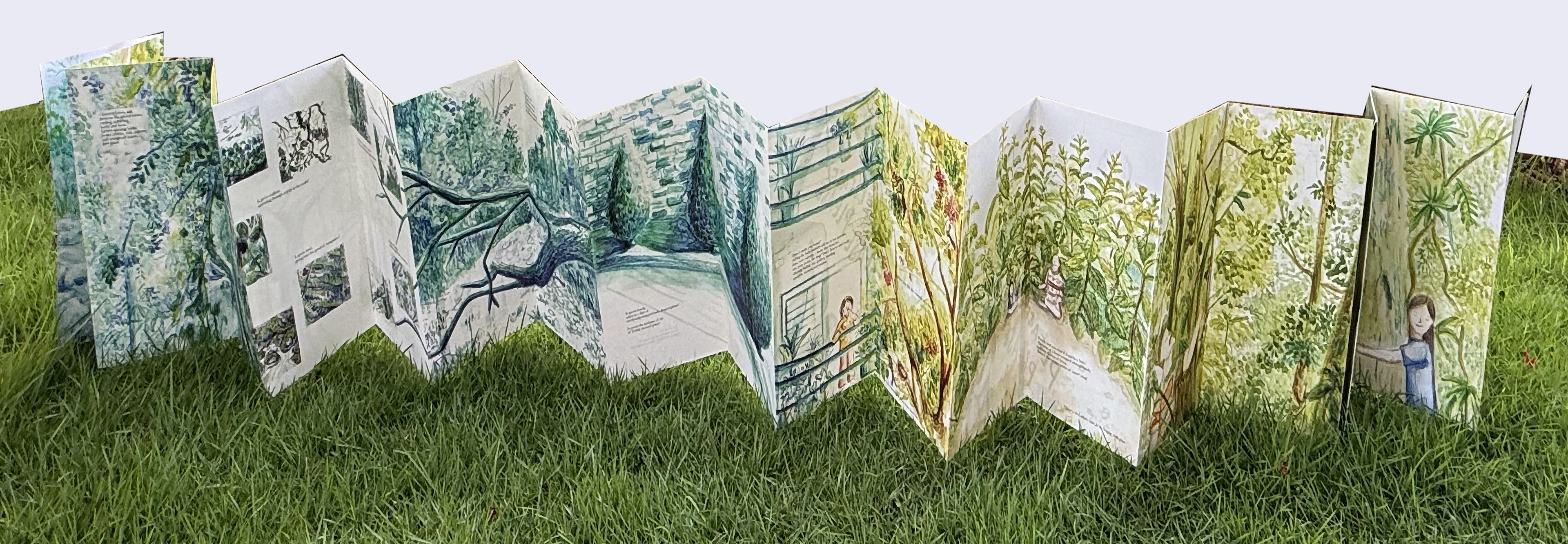
The narrative runs across both sides of the accordion, focusing on the different emotions experienced by individuals.
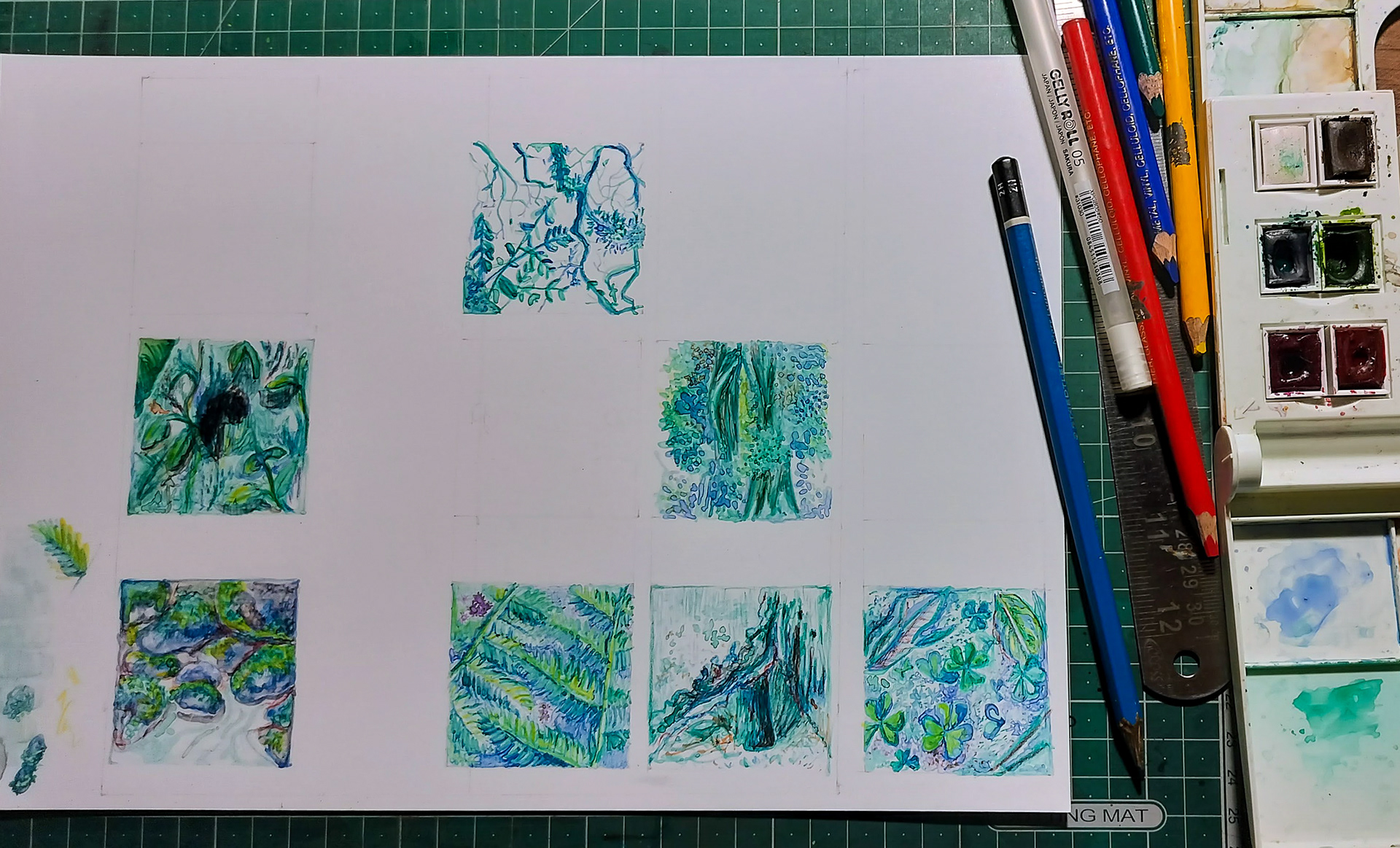
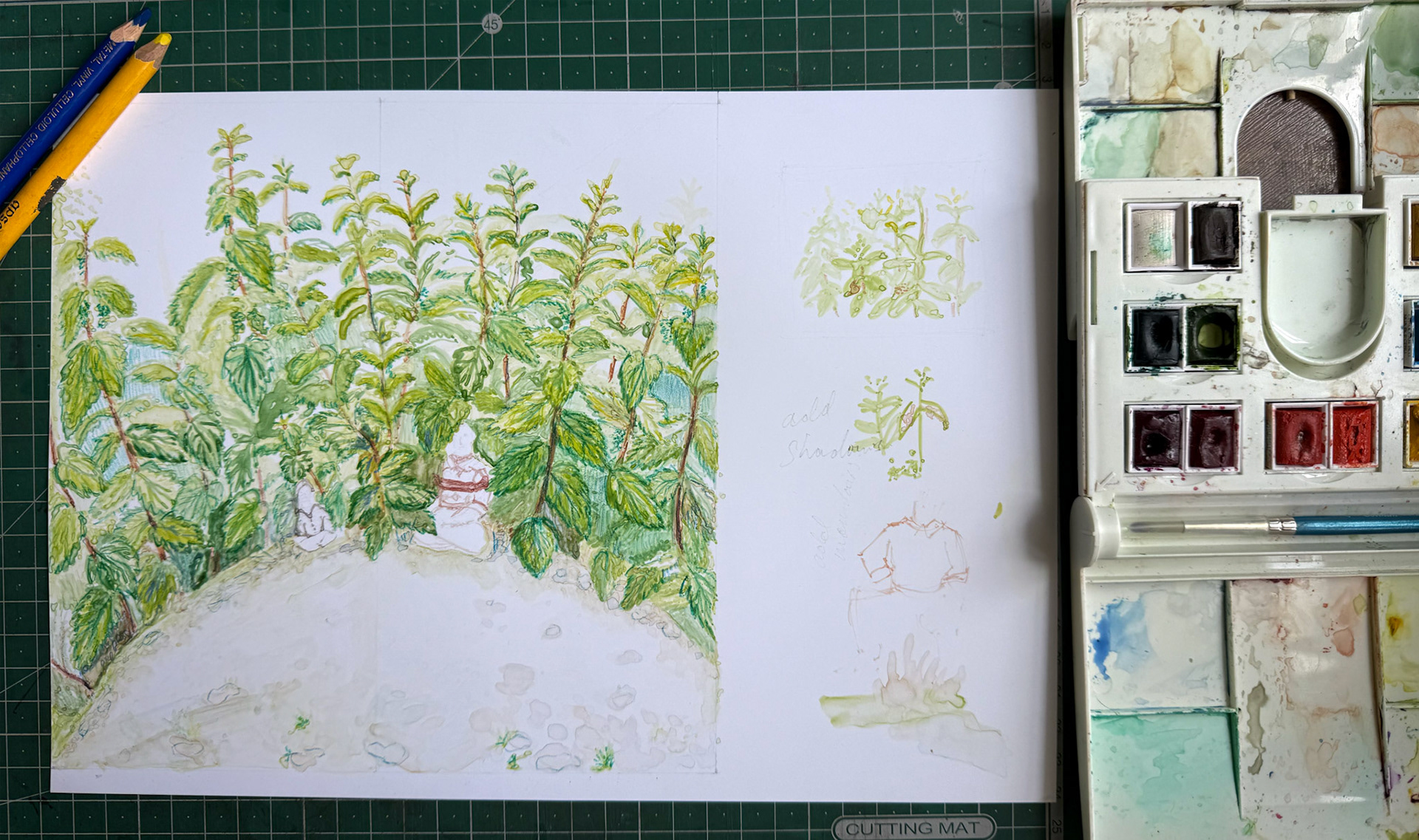
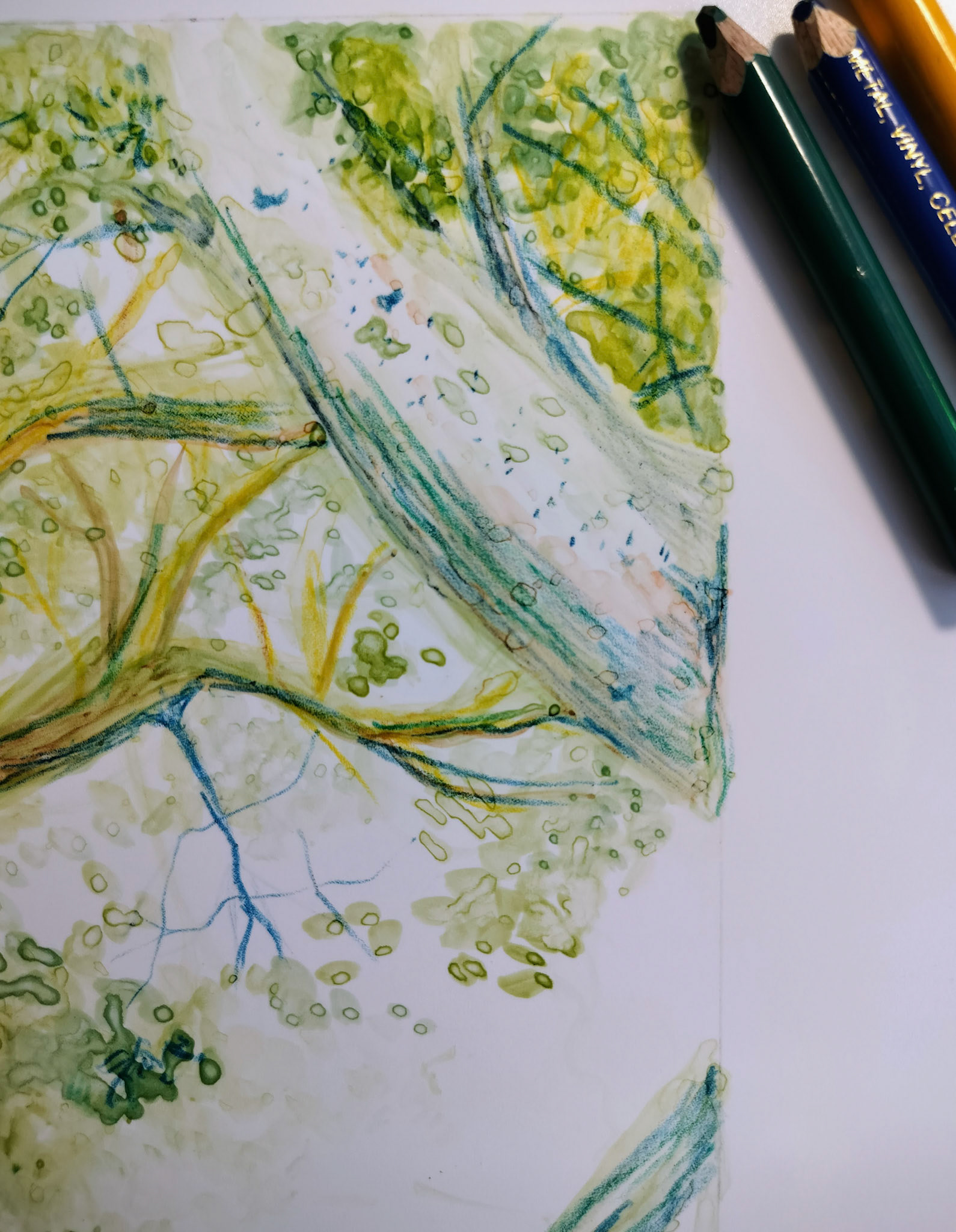
Each illustration in the frame was hand painted using watercolours on photo paper, with glass markers and pastels to add more texture, and scanned and edited digitally.
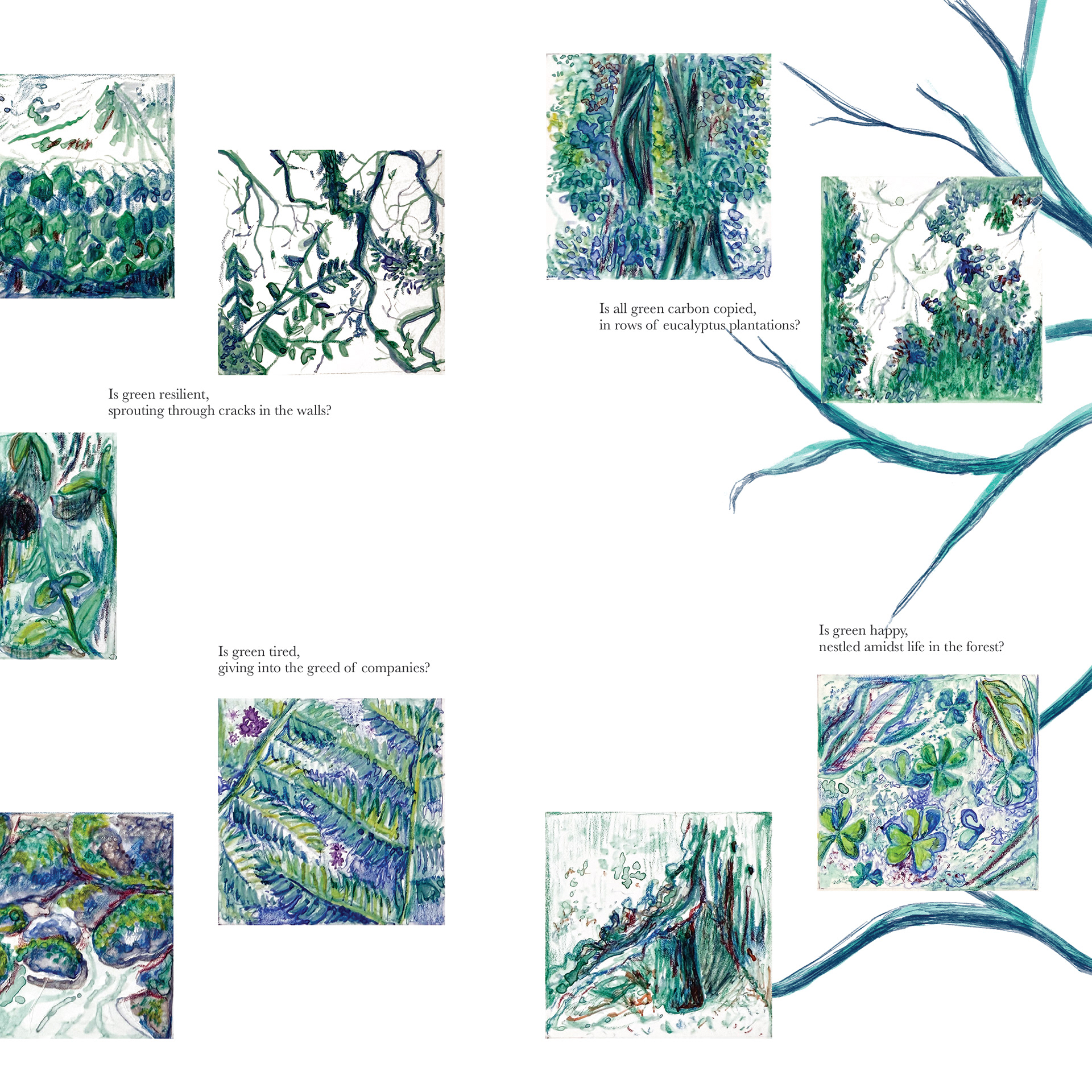
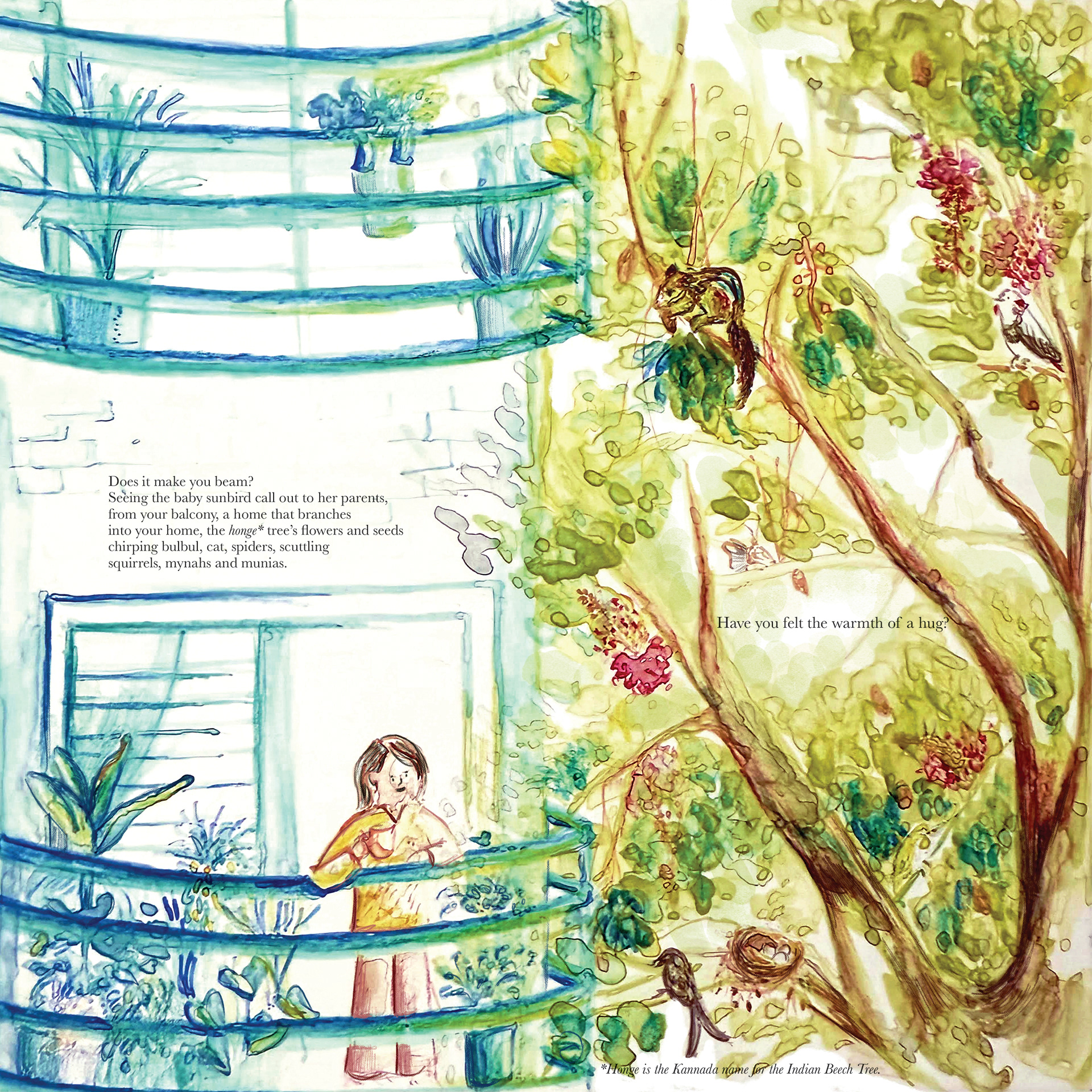
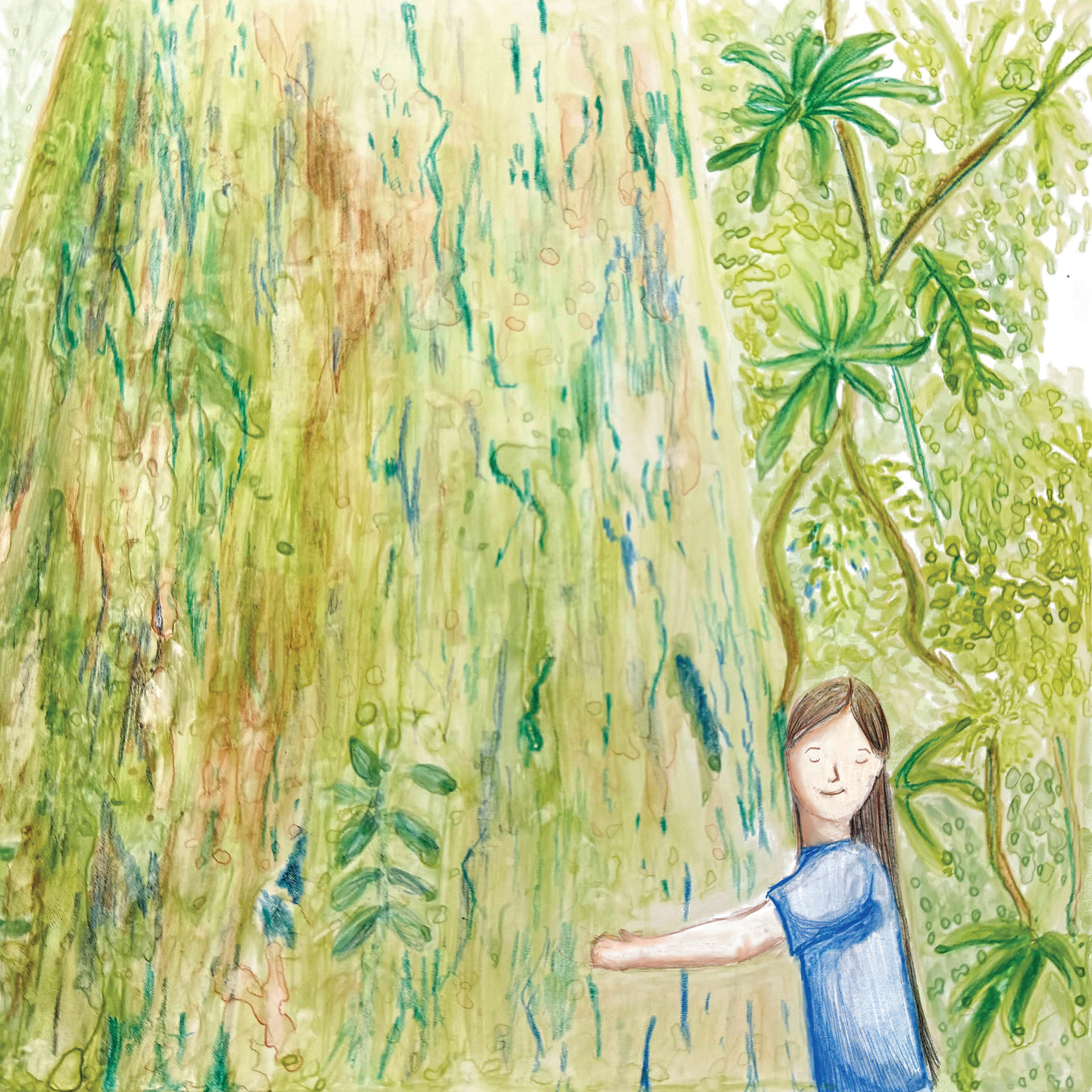
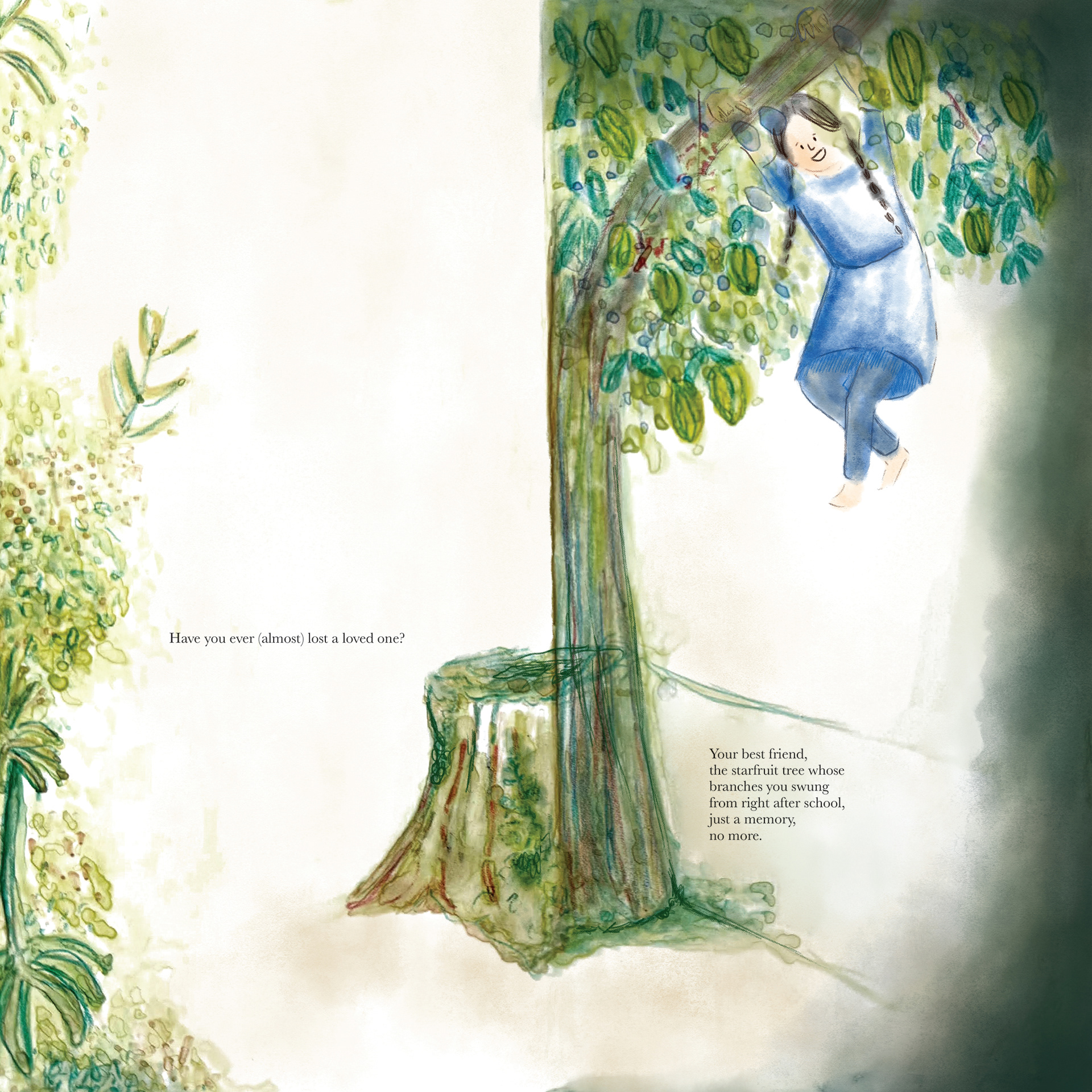
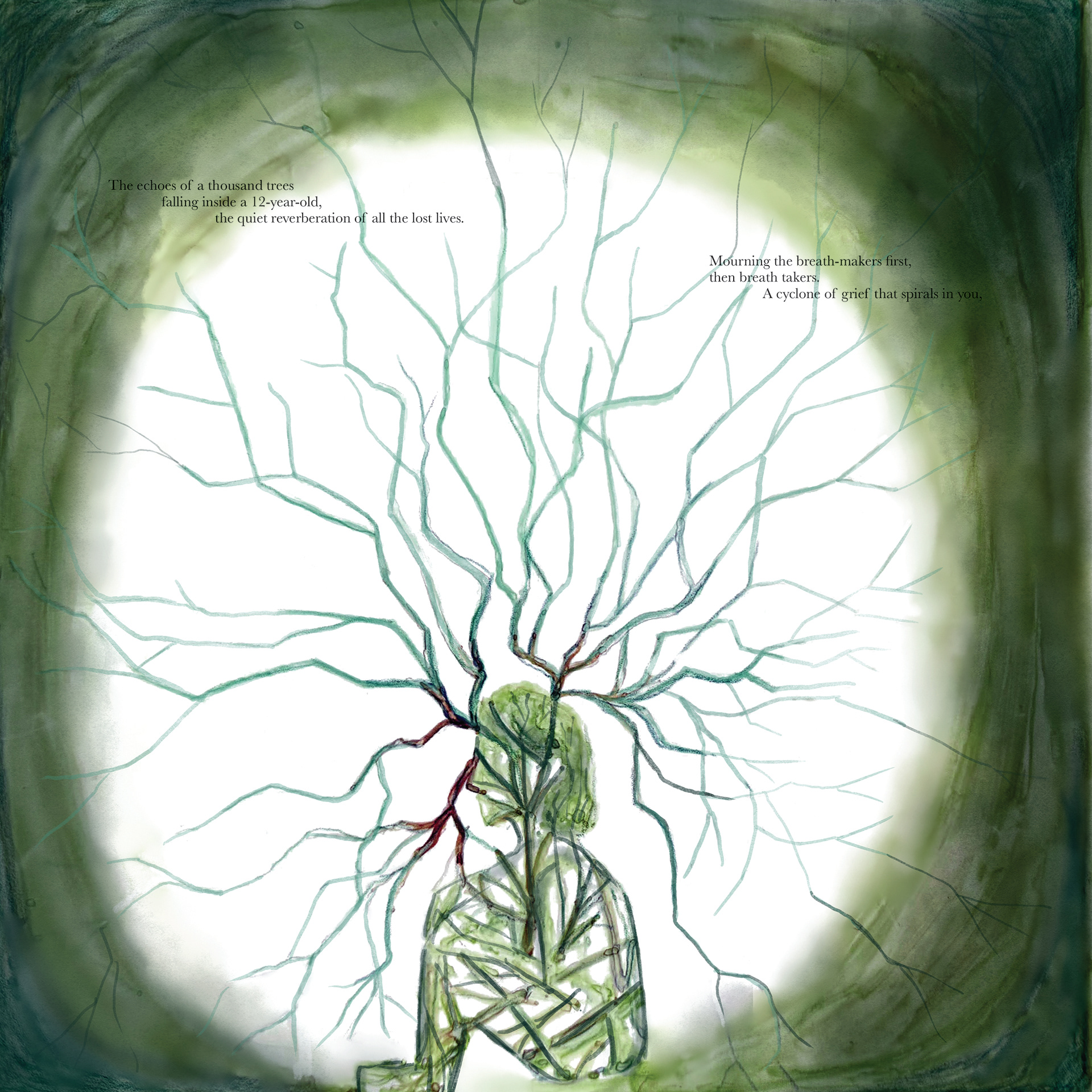
Some spreads from the book.

